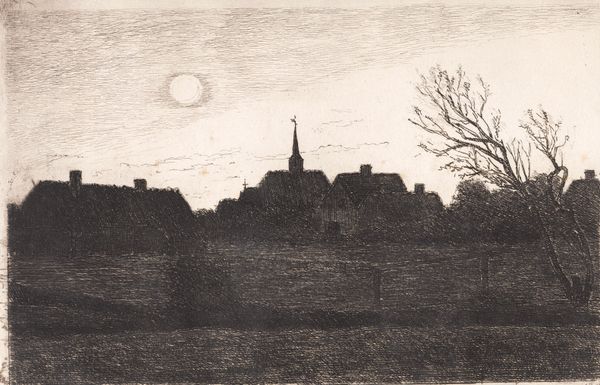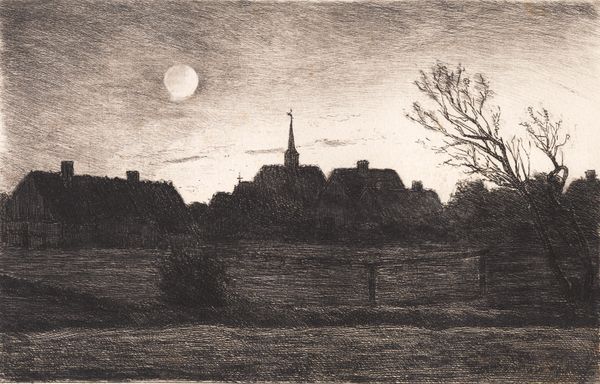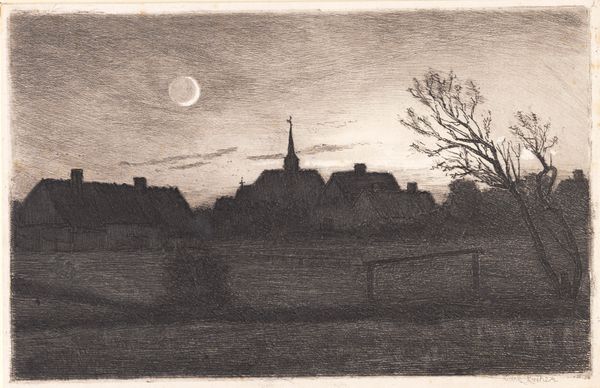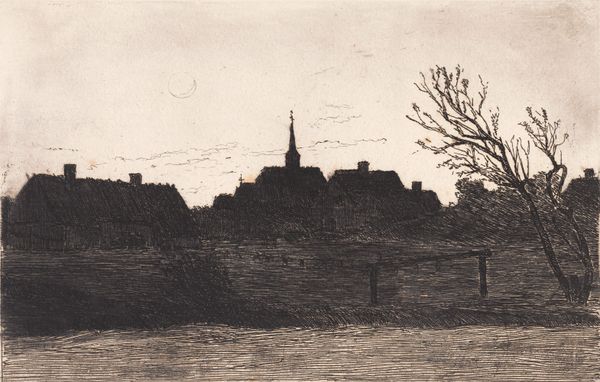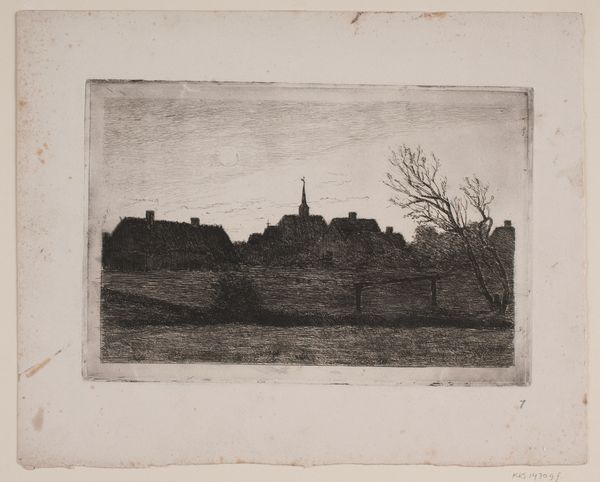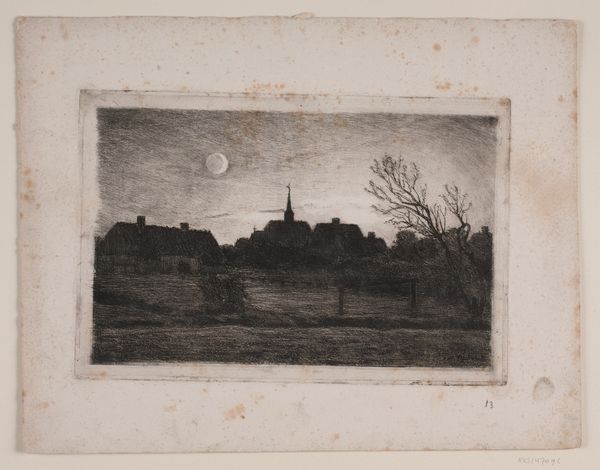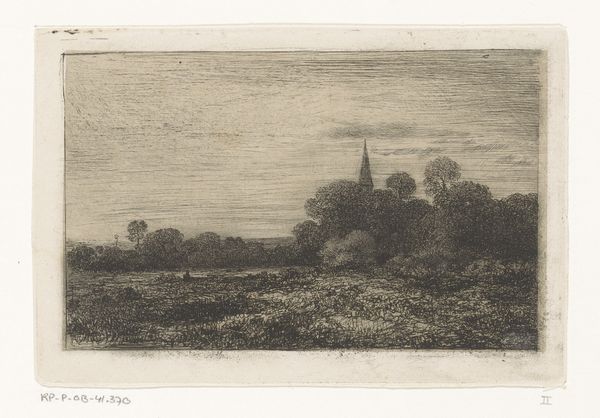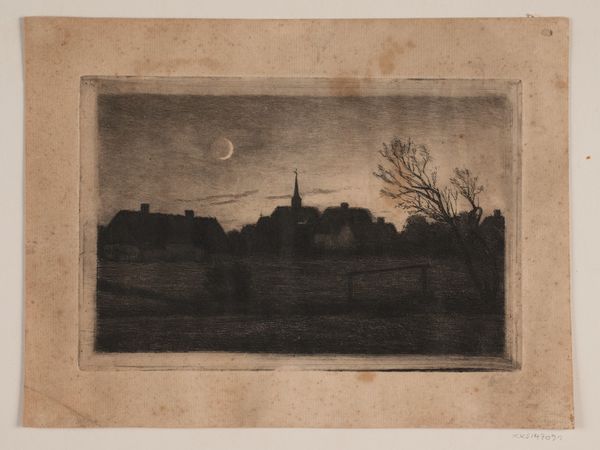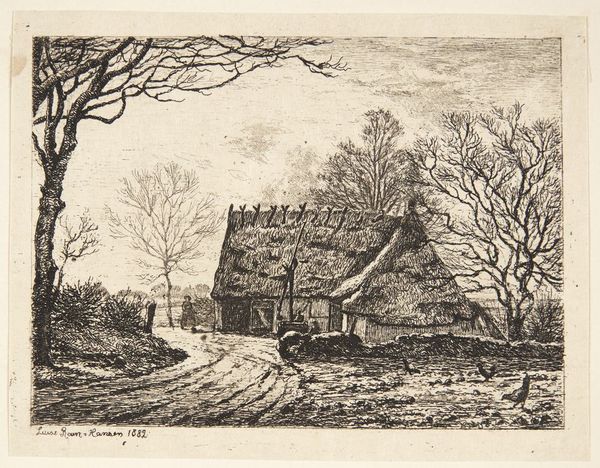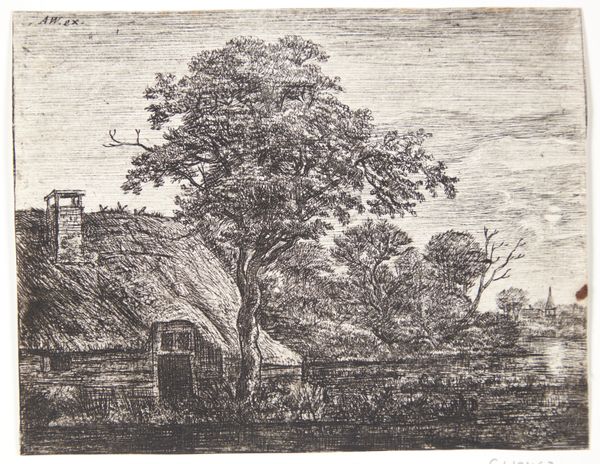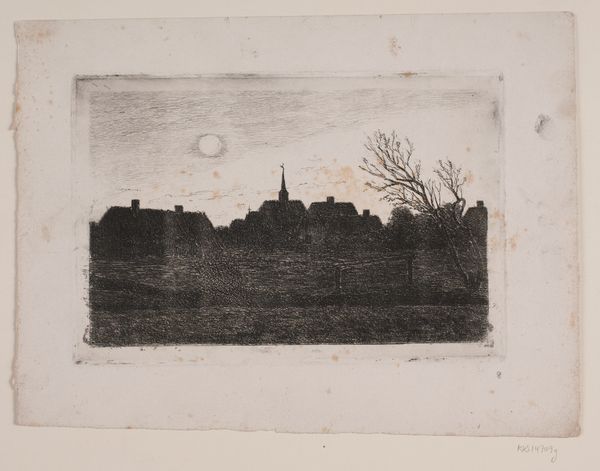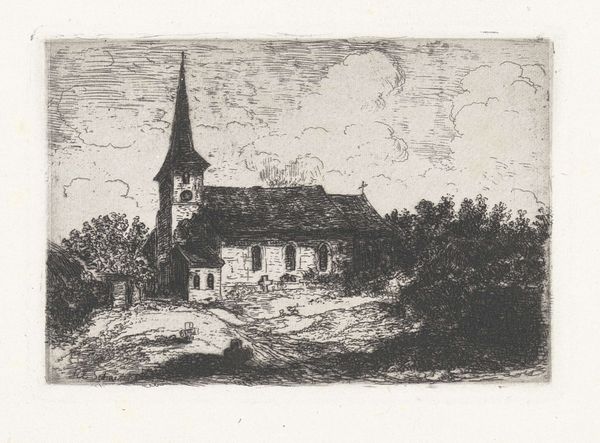
print, etching
# print
#
impressionism
#
etching
#
landscape
#
cityscape
Dimensions: 161 mm (height) x 242 mm (width) (plademaal)
Curator: Carl Locher created this etching, “Hornbæk kirke, sommeraften” or "Hornbæk Church, Summer Evening," in 1887. It's part of the collection at the SMK, the National Gallery of Denmark. Editor: The atmosphere in this print is quite captivating! The composition and monochromatic values lend a dreamlike, slightly unsettling quality to this otherwise tranquil village scene. Curator: Indeed. The technical skill here is impressive; the delicate lines Locher uses in this printmaking technique evoke a tangible sense of the late evening light. Look at the variations in the crosshatching in the sky compared to that in the buildings. Editor: The church is the clear focal point. How might this work reflect broader trends in late 19th-century Danish art, particularly Impressionism and its depictions of everyday life? Is it trying to elevate religion into a common motif? Curator: You touch on interesting points. This image exists in a tension between representing modern life while harking back to the idealized landscapes of previous generations. Locher was of course connected with other artists of the time who were concerned with representing the effects of light and capturing transient moments. The placement of the church offers a kind of spiritual and cultural stability, particularly considering that Hornbæk was becoming quite popular as a summer retreat. Editor: So perhaps Locher’s choice is more deliberate than spontaneous? The low horizon line accentuates the village's vertical presence and draws the viewer into this intimate scene. It subtly contrasts what you call this growing cultural popularity for retreat alongside a solid fixture within a rural countryside. Curator: Exactly. And while seemingly a simple etching, “Hornbæk kirke, sommeraften” holds many social and formal complexities that offer insight into Danish society at the time. Editor: This piece truly exemplifies how a singular focus can amplify nuances in subject and media into impactful art statements. Curator: It goes to show that a careful investigation of line and form can open up broader contexts in artmaking.
Comments
No comments
Be the first to comment and join the conversation on the ultimate creative platform.
